#Grape Seed Oil
Explore tagged Tumblr posts
Text





[IT'S BECAUSE SOMEONE'S MAKING MARGARITAS. GRAPE SEED OIL, SOME RED ONION. A LITTLE LEMON GRASS, SOME RED CURRY PASTE. MORE SRIRACHA HOT SAUCE. SUGAR AND FISH SAUCE.]
#s08e04 triple d goes tailgatin'#guy fieri#guyfieri#diners drive-ins and dives#some red curry paste#more sriracha hot sauce#some red onion#grape seed oil#little lemon grass#fish sauce#making margaritas#someone#sugar
7 notes
·
View notes
Text

Grape seeds contain many substances that are good for the human body. So people choose to press grape seeds into oil and make grape seed oil. Used for daily edible or made into skin care products for human body absorption.
#Grape seed oil#grape seed pressing#grape seed oil refining#grape seed oil extraction#grape seed oil pressing machine#sinoder#Grape seed oil cosmetics#grape seed oil skin care products
2 notes
·
View notes
Text
Green Tea and Peppermint Sugar Scrub
The first Non-recipe Post! Try this easy and refreshing DIY body scrub!
This post contains affiliate links, you can read my full disclosure HERE. Find Northbird on social media: Tumblr Facebook LinkedIn Instagram Pinterest Twitter Jump to Recipe Sugar scrubs! These are timeless, easy and a fun DIY for personal care products. I have many fond memories of making these with friends and then giving each other foot scrubs and pedicures afterward! I love the…

View On WordPress
#benefits of using a sugar scrub on your skin#benefits of using coconut oil on your skin#Calendula#Cane Sugar#chamomile#Coconut oil#Coconut Sugar Scrub#diy gift#easy diy#Easy DIY Sugar Scrub#Essential Oils#Exfoliant#Facial Scrub#glass jar gift#Glass Jar Sugar Scrub#Grape Seed Oil#Grapeseed oil#Green Tea#Herbs#How to Make a Sugar Scrub#Jojoba Oil#Lavender#Lavender essential oil#Lemon essential Oil#Mint#Natural Sugar Scrub#Olive Oil#Organic#Peppermint#peppermint essential oil
0 notes
Text

Homemade Vegan Cream Cheese Logs
#vegan#appetizer#vegan cheese#diy#veganized#cream cheese logs#vegan cream cheese#cashews#tofu#vegan yogurt#apple cider vinegar#coconut oil#black pepper#sea salt#customizable#hazelnuts#parsley#dried cranberries#dill#chives#sesame seeds#charcuterie#crackers#grapes#olives#dried apricots#lingonberry jam#walnuts
65 notes
·
View notes
Text
How Cure It Herb’s Grape Seed Face Oil Benefits Your Skincare Routine
Revitalize your skin with Cure It Herb’s Grape Seed Face Oil, crafted from the finest grape seeds. This lightweight, oil-free formula is rich in natural antioxidants and fatty acids, making it ideal for all skin types. Infused with a blend of nourishing ingredients, this facial oil penetrates deep into the skin to provide essential hydration, improve texture, and deliver a youthful glow. Experience soft, smooth, and radiant skin with every use.
What is Cure It Herb’s Grape Seed Face Oil?
Cure It Herb’s Grape Seed Face Oil is a premium skincare product made from cold-pressed grape seeds. It is loaded with antioxidants, vitamins, and essential fatty acids, designed to nourish and protect your skin. Its lightweight formula absorbs quickly, making it suitable for oily, dry, and sensitive skin alike.
Ingredients That Nourish
Grape Seed Oil: Packed with vitamin E and polyphenols to protect skin from damage.
Fractionated Coconut Oil: A great moisturizer that hydrates without clogging pores.
Essential Oils: Provide additional nourishment and a delightful aroma.
Pomegranate Peel Powder: Known for its anti-aging properties.
Green Tea: Full of antioxidants to further safeguard your skin.
Rose: Offers soothing benefits and a natural fragrance.
Key Benefits of Cure It Herb’s Grape Seed Face Oil
Rich in AntioxidantsThe oil is packed with antioxidants, especially vitamin E and polyphenols, that protect the skin from environmental stressors.
Great MoisturizerHigh in linoleic acid, it keeps skin hydrated without clogging pores, making it suitable for both dry and oily skin.
Improves Skin TextureBoosts collagen production, leading to firmer, stronger, and more elastic skin.
Reduces InflammationSoothes irritated skin, reducing redness and swelling. It’s beneficial for conditions like acne, eczema, and rosacea.
Evens Skin ToneLightens dark spots and blemishes, promoting a brighter and clearer complexion.
How to Use Cure It Herb’s Grape Seed Face Oil
Cleansing: Start with a clean face. Use your cleanser to remove dirt, grime, and impurities.
Tone: Apply toner to balance your skin’s pH and enhance oil absorption.
Application: Put a few drops of grape seed oil onto your hands. Gently massage into your face and neck using upward circular motions.
Hydration: Use it alone or layer under your favorite skincare products. For best results, apply twice daily—morning and night. It can also be mixed with other skincare products or used as a carrier oil for essential oils.
Why Choose Cure It Herb’s Grape Seed Face Oil?
Cure It Herb is committed to quality and sustainability. Our Grape Seed Face Oil is pure, natural, and free from harmful chemicals. Our meticulous extraction process preserves the oil’s benefits, providing you with a potent product that enhances your skin’s health and appearance.
Conclusion
Incorporating Cure It Herb’s Grape Seed Face Oil into your skincare routine can yield numerous benefits, from hydration to anti-aging effects. Its lightweight texture and rich antioxidant composition make it an ideal choice for anyone seeking healthier, glowing skin. Whether you use it alone or as part of a more extensive regimen, Cure It Herb’s Grape Seed Face Oil is a simple yet powerful addition to elevate your skincare game.
#face oil#skincare#skincare tips#skincare routine#skin products#skin health#beauty products#grape seed face oil
0 notes
Text

pasta salad
#side#main#pasta salad#pasta#sesame oil#cucumber#tomato#grape tomato#cherry tomato#red cabbage#bell pepper#orange pepper#red pepper#sesame seeds#cilantro#green onion#vegetarian#vegan
1 note
·
View note
Text
Nature's Elixir for Radiant Skin:
"Transform your beauty routine with the secrets of nature! 🍃 Our latest article unveils the power of essential oils for glowing skin and hair. Dive in and nourish your natural beauty! 💚 #EssentialOils #SkinCare #HairHealth #NaturalBeauty"
Unveiling the Secrets of Essential Oils for Ultimate Skin and Hair Care” “Skin type varies from person to person. There are oily, dry, or combination skin types, and each type has its own advantages and disadvantages. For example, oily skin is less prone to wrinkles but tends to have an unpleasant oily appearance. It makes fixing cosmetics difficult and is more susceptible to pimples and…

View On WordPress
#"Essential Oils#Anti-Aging#Apricot Kernel Oil#Argan Oil#Avocado Oil#Dry Skin Remedies#Grape Seed Oil"#Hair Health#Holistic Health#Moisturizing Oils#Natural Beauty#Organic Skin Solutions#Skin Care#Sunflower Oil#Sweet Almond Oil
0 notes
Text
[ Original Twitter Thread by @/beelektra ] - Not by Magz, am not Palestinian
Palestinian Foods. (long post)
Quote:
"🧵 Thread of Palestinian desserts I've grown up around and seen A thing I'd like to add is that I just like to share my culture! I do not want to spread the narrative that our culture is dying, I only want people to see our foods and traditions 🇵🇸
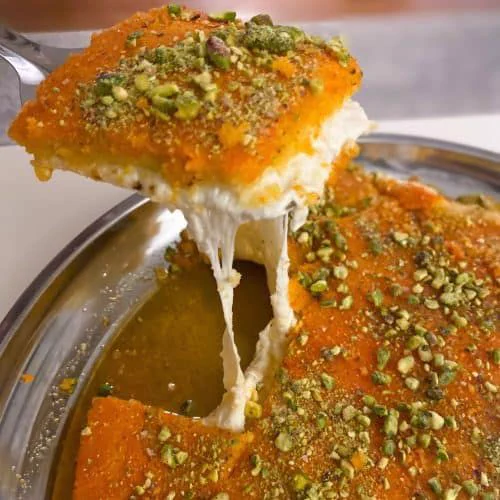
"As mentioned in the last post, we have knafeh (or kunafa), a buttery dessert made with shredded pastry layers such as cheese and other ingredients like pistacho or cream!"

"Burbara; which comes from Saint Barbara, fun fact! It's a soup dessert that mainly consists of barley, licorice spices, anise, cinnamon, and fennel powder This is a dessert usually many Christian families have to celebrate Saint Barbara, which is December 4th!"
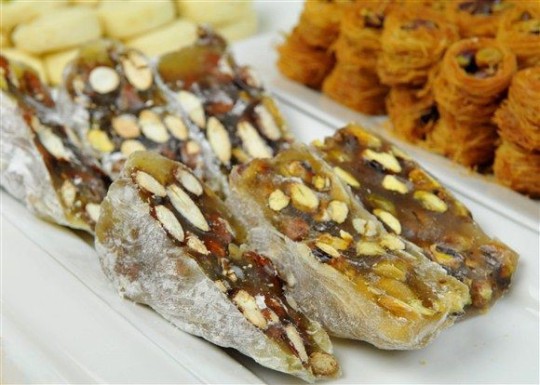
"Malban, which resembles a fruit jelly! Made from starch and sugar Specifically, it's made with grape molasses, thickened with starch and flavored with rose water, and stuffed with almonds (or other nuts including walnuts, treenuts, and peanuts)"

"Khabeesa is simply just a pudding made with grapes, but you prepare it by mixing the grape juice with semolina and nuts + seeds."

"Mtabbak or mtabba, a crispy dough stuffed with crushed walnuts. It also contains cinnamon, sugar, and syrup. Photo credits go to Bartek Kieżun on Instagram"
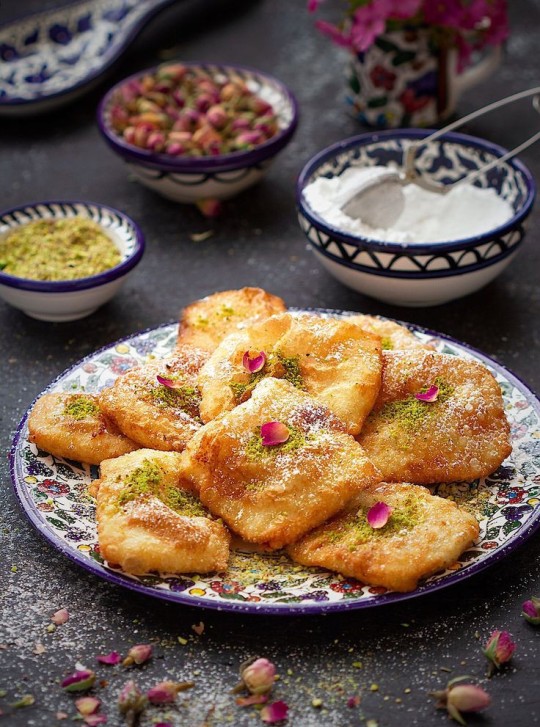
"Tamriyeh, a fried pastry filled with semolina pudding, scenter with mastic and orange blossom water, and topped off with powdered sugar"

"Ka'ak bi Tamer, which are date paste filled cookies with cinnamon! A dessert made for Eid-Alfitr. It's topped with nigella seeds, and the cinnamon-spiced date paste is the most important part of it all– you can eat it on its own or have it with coffee"
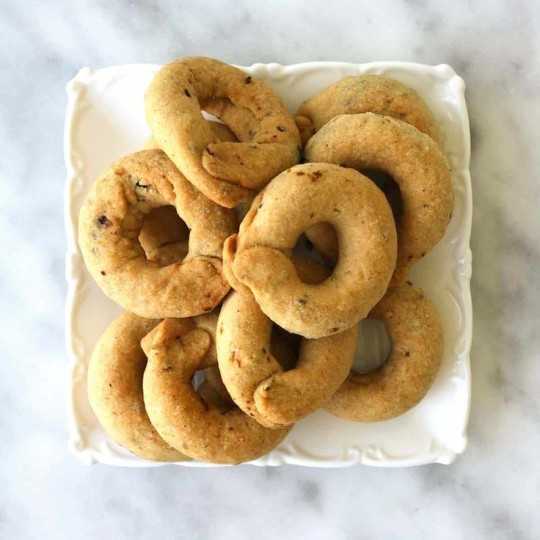
"+ Ka'ak Asawer, another dessert that can be prepared for Eid-Alfitr. It's translated to bracelet cookies, and they use date paste, flour, anise seeds, sugar, ground cinnamon, and olive oil"
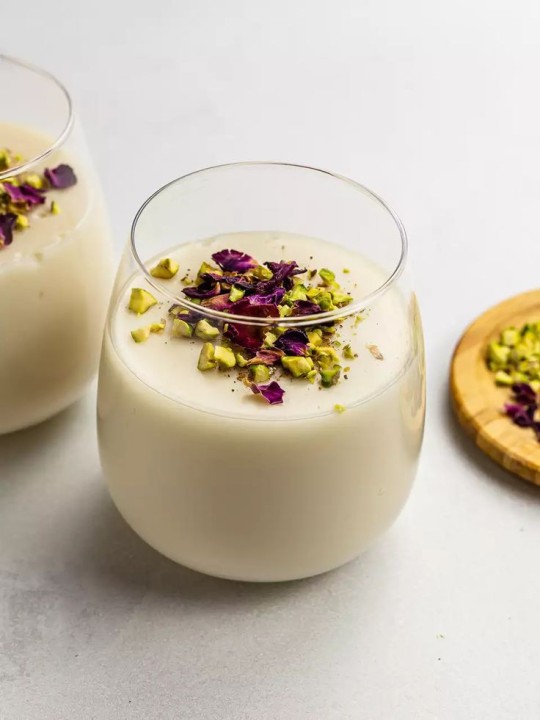
"Muhallebi or mahalabia, a milk pudding that's made with sugar, corn starch, and fragrant flavorings! It's topped off with nuts, pistachos, and almonds and sprinkled with ground cinnamon or shredded coconut"

"Rice pudding, which is a common dessert in Palestine, and it's your choice to top it off with nuts or not"
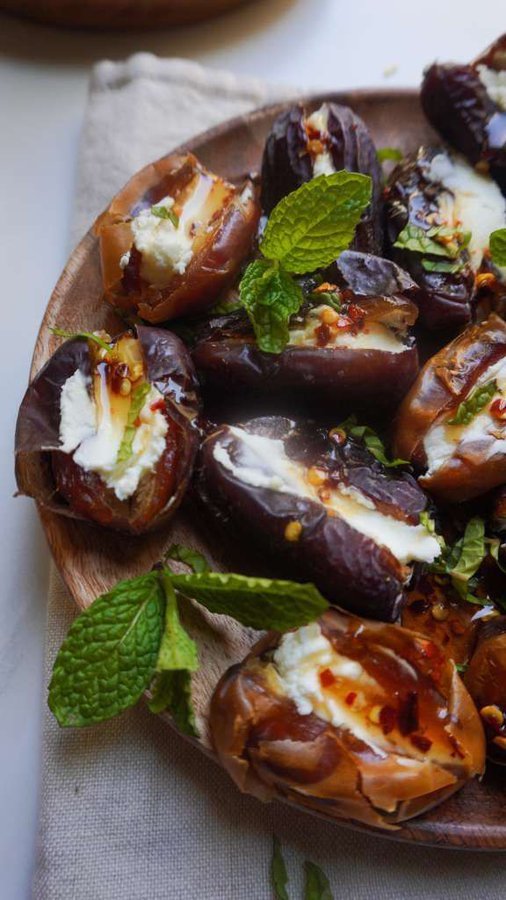
"Stuffed dates, using medjool dates and cracking them open to be stuffed with goat cheese and pistachios– but you're free to add anything else"

"Ma'amoul, a buttery crisp cookie primarily made of farina and can be stuffed with (spiced) dates, walnuts, or pistachios. This is another Christian dessert made by Palestinian mothers during the week of Easter Sunday."
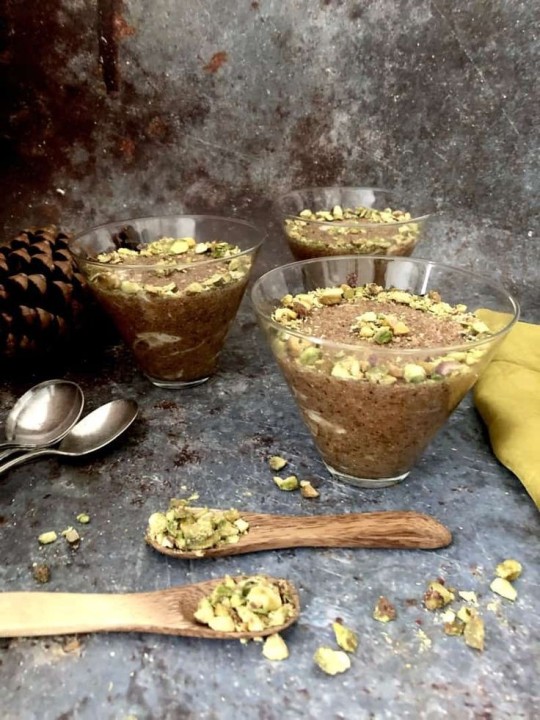
"Halawit Smid, a farina based dessert with added sugar and unsalted cheese. It's preferably served fresh"
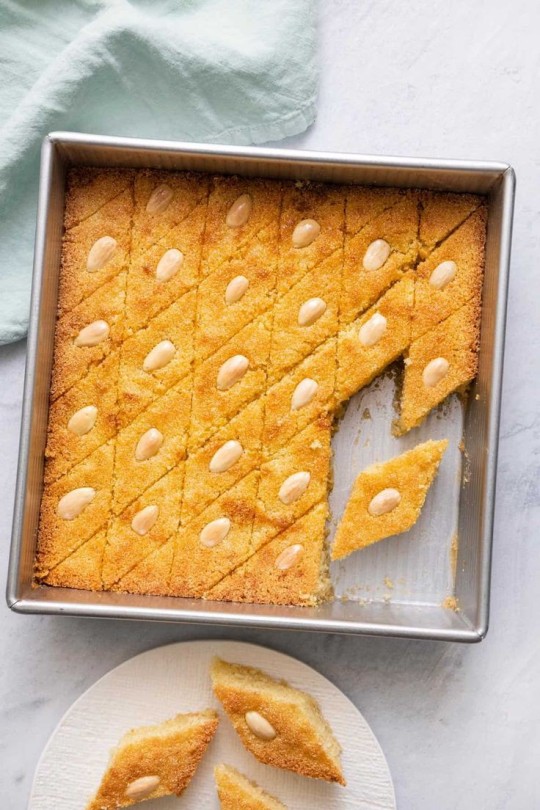
"Namoura cake, aka harissa dessert! It's made with semolina or farina flour, and then topped off with syrup once baked"
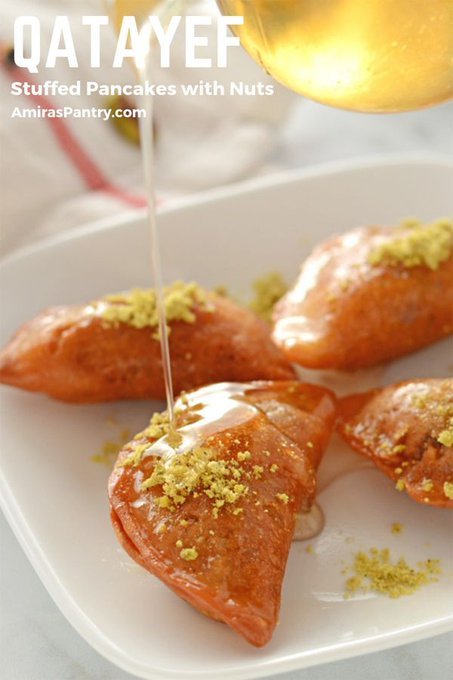
"Qatayef, which is eaten during the month of Ramadan. It's made of farina, flour, water, and yeast blended together– the process is pretty similiar to making pancakes, but only one side is cooked"
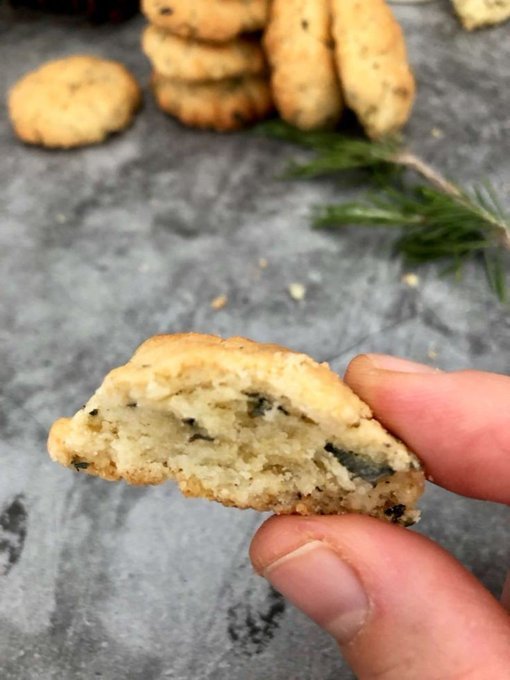
"Since I've mentioned using zaatar for a lot of things, I recently just discovered this but– there's also things such as zaatar cookies!! It's just as implied that the cookies are filled with zaatar, I'd be so willing to make this on my own"

"Baklava, made from phyllo pastry dough, butter, nuts, basil, and a sweet honey syrup"
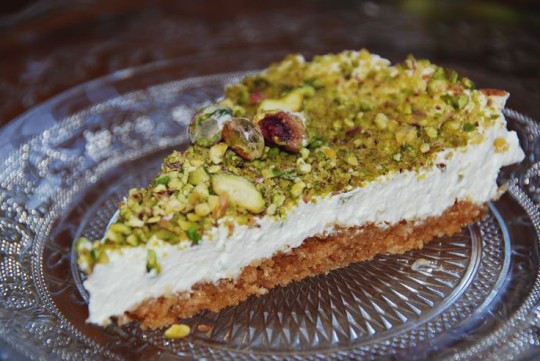
"Aish el saraya, arabic version of a bread pudding. It's basically a layered bread, where it starts from the bottom, then covered with a sweet syrup, cream, and crumbled pistachios."
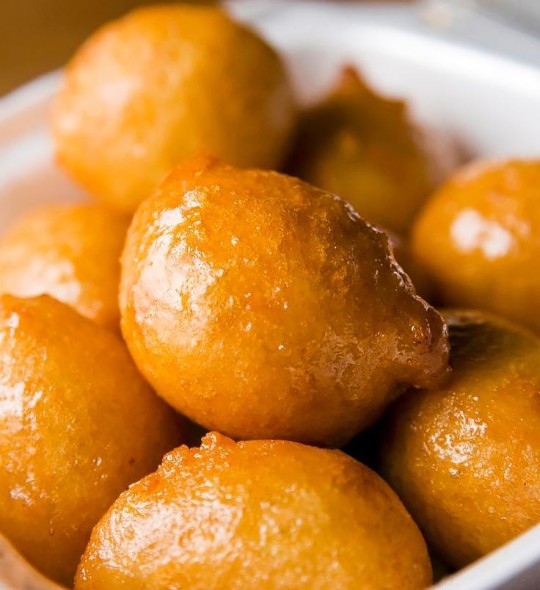
"Awwami, it's defined as "crisp donut ball" in English. It's a deep fried dough ball coated with sesame seeds, and dipped in cold syrup water."
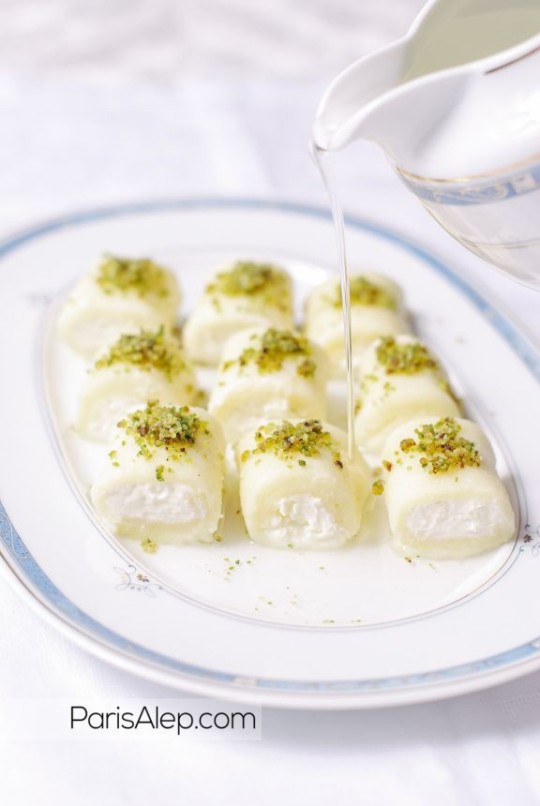
"Halawet el Jibn, a sweet cheese dessert rolled with custard, heavy cream, drizzled rose water + syrup, and garnished with nuts."
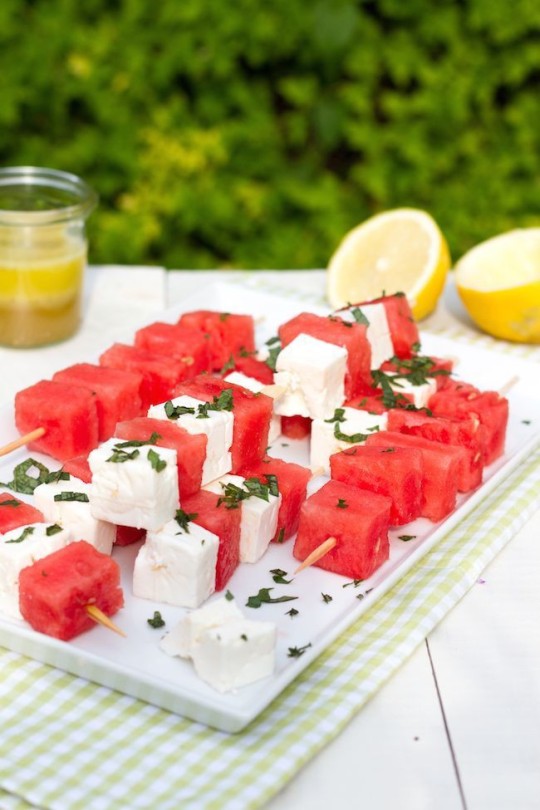
"Lastly, I'd like to add watermelon and cheese– for me, it's like,,,, bittersweet!!! You should totally try it and we also have this during Ramadan"
"Well, that's all I can think of for Palestinian desserts! Here's the first part for general foods, I know I did make a promise for part two
I hope you guys liked this thread, and if you have any opinions please feel free to quote tweet anything on here if I made a mistake, feel free to correct me, it's always appreciated P.S if you're a zionist commenting here I really don't care, just scroll, I'm sharing my culture
One LAST thing. if you want any of the recipes from here, check out this website, the creator (Wafa) shares so many wonderful traditional Palestinian dishes."
[End Quote]
7K notes
·
View notes
Text
0 notes
Text
Trying to figure out TP Link's diet based on his environment.


Livestock-wise, we've got cuccos and goats. That means
Eggs
Milk
Butter
Cheese
Potentially meat, but I don't think they get eaten unless they're old. Too valuable otherwise | EDIT: Oh yeah you need to breed goats every couple years to get milk. Add in cabrito veal!
And we know for a fact that Ordon Goat Cheese specifically is a thing. Stamped wheel and everything.

There's also fish

And bees/hornets(? It's called bee larva, but the enemy is a Hylian Hornet)

Useful for bait, but Link can eat them.
Did some more research, and apparently in Japan they eat wasp larvae? Specifically in Kushihara. So I'm counting it.

Then plants-wise we have pumpkins

And...corn. Somehow. I've never seen corn growing, but Link has some hanging in his house, so it exists.

I'm choosing to believe it comes from these plants that grow in patches around Ordon.
That gives us a lot. We've got
Cornstarch
Cornmeal
Corn oil
Corn shoots
Pumpkin seeds
Pumpkin seed oil
Pumpkin flour
Pumpkin blossoms
No source of sugar, but depending on how the pumpkins in Ordon taste, they could be naturally sweet. Like pie pumpkins. Also corn syrup is a thing if it's a sweet corn. So corn syrup needs cream of tartar which comes from grapes and apples and such. It's a byproduct of wine. No corn syrup.
Edit: Malt sugar, though!
Now for hypothetical foods.

Ordon is surrounded by pine trees, so that adds pine needle tea and pine nuts to the mix. I was a little worried about species, but apparently there are a lot of pine trees that make edible seeds, so on the list it goes.



Then there are frogs near Rusl and Uli's house, wild songbirds on cliffs, and a squirrel that talks to Link directly, so those are huntable sources of meat.

Is horse grass a cattail? Maybe? Initially, I thought it was—the ends look like cattail seedpuffs, but the leaves are completely different.
I want to treat them like cattails. Cattails that also are probably the main food source for Epona and the goats.
If we do that, that means, on top of all the other uses cattails have like stuffing and tinder and antiseptic, we get
Roots
Shoots
Ground seeds
Can't find a good match for hawk grass though. Concluding that that's not edible. Equivalent exchange and all.
Side note, how do you think horse grass spreads? It's almost always in groups of two or more plants, so that suggests rhizomes, but the image of Link picking one up to blow and stuffing flying out the end of the horseshoe is hilarious to me.


Up next, there are ferns, primarily near trees. After very careful and way-too-deep analysis of a pixelated fern's leaves, I think it's bracken fern.
Which is mildly poisonous.
And also edible.
On the list it goes!

Then finally, Sera has some kind of herb hanging in her shop.
I don't know what it is. I'm calling it Ordon Spice. Congratulations, Ordon Pumpkin Spice is now a thing.
#long post#twilight princess#loz#zelda#analysis#theory#worldbuilding#hello it is bee being a nerd about zelda hours again
761 notes
·
View notes
Text
September 2024 Witch Guide
New Moon: September 2nd
First Quarter: September 11th
Full moon: September 17th
Last Quarter: September 24th
Sabbats: Mabon- September 22nd
September Harvest Moon
Also known as: Autumn Moon, Child Moon, Corn Harvest Moon, Falling Leaves Moon, Haligmonath, Leaves Turning Moon, Mating Moon, Moon of Brown Leaves, Moon When Dear Paw the Earth, Rutting Moon, Singing Moon, Wine Moon, Witumanoth & Yellow Leaf Moon
Element: Earth
Zodiac: Virgo & Libra
Nature spirts: Trooping Faeries
Deities: Brigid, Ceres, Chang-e, Demeter, Freya, Isis, Depths & Vesta
Animals: Jackal & snake
Birds: Ibis & sparrow
Trees: Bay, hawthorn, hazel & larch
Herbs: Copal, fennel, rye, skullcap, valerian, wheat & witch hazel
Flowers: Lily & narcissus
Scents: Bergamot, gardenia, mastic & storax
Stones: Bloodstone,carnelian, cat's eye, chrysolite, citrine, iolite, lapis lazuli, olivine, peridot, sapphire, spinel(blue), tourmaline(blue) & zircon
Colors: Browns, dark blue, Earth tones, green & yellow
Issues, intentions & powers: Confidence, the home, manifestation & protection
Energy: Balance of light & dark, cleaning & straightening of all kinds, dietary matters, employment, health, intellectual pursuits, prosperity, psychism, rest, spirituality, success & work environment
The full Moon that happens nearest to the fall equinox (September 22nd or 23rd) always takes on the name “Harvest Moon.” Unlike other full Moons, this full Moon rises at nearly the same time—around sunset—for several evenings in a row, giving farmers several extra evenings of moonlight & allowing them to finish their harvests before the frosts of fall arrive.
• While September’s full Moon is usually known as the Harvest Moon, if October’s full Moon happens to occur closer to the equinox than September’s, it takes on the name “Harvest Moon” instead. In this case, September’s full Moon would be referred to as the Corn Moon.
This time of year—late summer into early fall—corresponds with the time of harvesting corn in much of the northern United States. For this reason, a number of Native American peoples traditionally used some variation of the name “Corn Moon” to refer to the Moon of either August or September.
Mabon
Known as: Autumn Equinox, Cornucopia, Witch's Thanksgiving & Alban Elved
Season: Autumn
Element: Air
Symbols: Acorns, apples, autumn leaves, balance, berries, corn, cornucopia( Horn of Plenty), dried seeds, equality, gourds, grains, grapes, ivy, pine cones, pomegranates, vines, wheat, white roses & wine
Colors: Blue, brown, dark red, deep gold, gold, indigo, leaf green, maroon, orange, red, russet. Violet & yellow
Oils/Incense: Apple, apple blossom, benzoin, black pepper, hay/straw, myrrh, passion flower, patchouli, pine, red poppy & sage
Animals: Dog & Wolf
Birds: Goose, hawk, swallow & swan
Stones: Agate, amethyst, carnelian, lapis lazuli, sapphire, yellow Agate & yellow topaz
Food: Apples, blackberries, blackberry wine, breads, carrots, cider, corn, cornbread, grapes, heather wine, nuts, onions, pomegranates, potatoes, squash, vegetables, wheat & wine
Herbs/Plants: Benzoin, bramble, corn, ferns, grains, hops, ivy, milkweed, myrrh, sage sassafras, Salomon's seal, thistle, tobacco & wheat
Flowers: Aster, heather, honeysuckle, marigold, mums, passion flower, rose
Trees: Aspen, cedar, cypress, hazel, locust, maple, myrtle oak & pine
Goddesses: Danu, Epona, Inanna, Ishtar, Modron, Morgan, The Morrigan, Muses, Pomona, Persephone, Sin, Sophia & Sura
Gods: Bacchus, Dionysus, Dumuzi, Esus, The Green Man, Hermes, Mannanan, Thor & Thoth
Issues, Intentions & Powers: Accomplishment, agriculture, balance, goals, gratitude & grounding
Spellwork: Balance, harmony, protection, prosperity, security & self-confidence
Activities:
•Scatter offerings in a harvested fields & Offer libations to trees
• Decorate your home and/or altar space for fall
• Bake bread
• Perform a ritual to restore balance and harmony to your life
• Cleanse your home of negative energies
• Pick apples
• Collect fall themed things from nature like acorns, changing leaves, pine cones, ect)
• Have a dinner or feast with your family and/or friends
• Set intentions for the upcoming year
• Purge what is no longer serving you & commit to healthy changes
•Take a walk in the woods
• Enjoy a pumpkin spice latte
• Donate to your local food bank
• Gather dried herbs, plants, seeds & pods
• Learn something new
• Make wine
• Fill a cornucopia
• Brew an apple cinnamon simmer pot
• Create an outdoor Mabon altar
•Adorn burial sites with leaves, acorns, & pinecones to honor those who have passed over & visit their graves
The name Mabon comes from the Welsh/Brythonic God Mabon Ap Modron, who's name means "Divine/great Son", However,there is evidence that the name was adopted in the 1970s for the Autumn Equinox & has nothing to do with this celebration or this time of year.
• Though many cultures see the second harvest (after the first harvest Lughnasadh) & Equinox as a time for giving thanks before the name Mabon was given because this time of year is traditionally when farmers know how well their summer crops did & how well fed their animals have become. This determines whether you & your family would have enough food for the winter.That is why people used to give thanks around this time, thanks for their crops, animals & food
Some believe it celebrates the autumn equinox when Nature is preparing for the winter months. Night & day are of equal legth & the God's energy & strength are nearly gone. The Goddess begins to mourn the loss she knows is coming, but knows he will return when he is reborn at Yule.
Related festivals:
• Sukkot- Is a Torah-commanded holiday celebrated for seven days, beginning on the 15th day of the month of Tishrei. It is one of the Three Pilgrimage Festivals on which Israelites were commanded to make a pilgrimage to the Temple in Jerusalem. Originally a harvest festival celebrating the autumn harvest, Sukkot’s modern observance is characterized by festive meals in a sukkah, a temporary wood-covered hut, celebrating the Exodus from Egypt.
• Mid-Autumn festival- September 17th
Is also known as the Moon Festival or Mooncake Festival. It is a traditional festival celebrated in Chinese culture, similar holidays are celebrated by other cultures in East & Southeast Asia. It is one of the most important holidays in Chinese culture; its popularity is on par with that of Chinese New Year. The history of the Mid-Autumn Festival dates back over 3,000 years. On this day, it is believed that the Moon is at its brightest and fullest size, coinciding with harvest time in the middle of Autumn.
During the festival, lanterns of all size and shapes – which symbolize beacons that light people's path to prosperity & good fortune – are carried & displayed. Mooncakes, a rich pastry typically filled with sweet-bean, egg yolk, meat or lotus-seed paste, are traditionally eaten during this festival. The Mid-Autumn Festival is based on the legend of Chang'e, the Moon goddess in Chinese mythology.
• Thanksgiving- This is a secular holiday which is similar to the cell of Mabon; A day to give thanks for the food & blessings of the previous year. The American Thanksgiving is the last Thursday of November while the Canadian Thanksgiving is celebrated in October
• The Oschophoria- Were a set of ancient Greek festival rites held in Athens during the month Pyanepsion (autumn) in honor of Dionysus. The festival may have had both agricultural and initiatory functions.
-Amidst much singing of special songs, two young men dressed in women's clothes would bear branches with grape-clusters attached from Dionysus to the sanctuary of Athena Skiras & a footrace followed in which select ephebes competed.
Ancient sources connect the festival and its rituals to the Athenian hero-king Theseus & specifically to his return from his Cretan adventure. According to that myth, the Cretan princess Ariadne, whom Theseus had abandoned on the island of Naxos while voyaging home, was rescued by an admiring Dionysus; thus the Oschophoria may have honored Ariadne as well. A section of the ancient calendar frieze incorporated into the Byzantine Panagia Gorgoepikoos church in Athens, corresponding to the month Pyanopsion (alternate spelling), has been identified as an illustration of this festival's procession.
Sources:
Farmersalmanac .com
Llewellyn's Complete Book of Correspondences by Sandra Kines
Wikipedia
A Witch's Book of Correspondences by Viktorija Briggs
Encyclopedia britannica
Llewellyn 2024 magical almanac Practical magic for everyday living
#wheel of the year#harvest moon#September 2024#witch guide#autumn equinox#Mabon#witchblr#wiccablr#paganblr#spirtual#grimoire#book of shadows#witch tips#beginner witch#baby witch#witch community#witchcraft#witchcore#witches of tumblr#tumblr witches#second harvest#moon cycle#witch#witchy stuff#witchy things#witchyvibes#GreenWitchcrafts#moon magic#traditional witchcraft#witches
447 notes
·
View notes
Text
The Many Uses for Earth Fruits
“Right,” said Paint, placing her scaly hands on the cafe table as if bracing herself for something unpleasant. “How do you eat these?”
I told her, “Well, you take the peel off first,” and picked up a banana.
“Okay, good to know. Glad I asked.” She lifted another gingerly, testing its softness with a claw and watching to see what I did. “So it just pops open?”
“If you do it quickly, yes,” I said. “And if it’s ripe. Moving too slowly will just squish it. Helps if you dig a fingernail in a little first. A claw.”
She followed my instructions while the sounds of the space station food court echoed around us. It wasn’t too crowded, but we’d picked a table next to the ramp down into the area, which felt more out of the way. Paint didn’t want to get her tail stepped on, and I didn’t want an elbow to the head while eating. Some of the people here were big.
“I got it!” Paint exclaimed, her lizardy face lit up with delight. “So you just eat this part?”
“Yep!” I said, demonstrating by taking a bite of my own banana. It was a little too green for my taste, but not bad.
Paint bit off a chunk, leaving sharp toothmarks behind. She chewed a couple times, then stopped and wrinkled her lizardy face in a fascinating way.
I said, “You can spit it out if you don’t like it.”
She spat the banana mush onto her plate, making disgusted noises while she tongued it out of her teeth. I pushed the bowl of grape-sized waterspheres closer. She tossed a couple into her mouth and bit down, swishing the water around dramatically.
“No good, huh?” I asked.
Paint shook her head. “No thank you. That texture is unpleasant, and the flavor isn’t better.”
“They’re not my favorite either,” I said, setting my banana down and picking up a strawberry. “Want to try one of these? I think they’re probably closer to the fruit you’re used to, at least in texture.”
She regarded it with suspicion. “Do you have to pick all those seeds off?”
“No, you can eat the whole thing, except for the leafy part. The seeds are small enough to ignore unless they get stuck in your teeth.” I bit into it and showed her what the inside looked like.
“I’ll try it,” she said. “Though that big one smells the most intriguing.” She pointed at the orange.
“Oh yeah, that’s got a nice strong citrus scent for sure,” I said. “People use orange oil for cleaning sometimes, and as a decorative smell. It’s flammable, though.”
“Of course it is. It’s from your planet. Does the whole fruit explode if exposed to flame?”
“No, nothing like that!” I hurried to explain. “If you squeeze the peel next to a candle, it makes the flame spurt. Nothing big.”
Paint shook her head. “Somehow that’s still not a surprise. I take it you only eat the inside of this one as well?”
“Yes, it—” The rest of my sentence was overshadowed by loud guffaws from the top of the ramp. I craned my neck to see a trio of Armorlites strolling casually into the food court. There were already a couple others here and there, but these three clearly liked being the center of attention. I was reminded of school bullies entering a cafeteria. Big dinosaurian bullies.
“Look at all the little plant eaters, with their plant shop! Does any of it run away or fight back? No? What weaklings.” The one in front laughed more, backed up by the others.
Yep, definite school bully vibes. I tried to turn back to my conversation in hopes that they’d just move on, but another human had made the mistake of trying to walk up the ramp while they were coming down, and they’d turned their sneering toward him.
The unlucky guy tried to stick close to the railing and give them plenty of room. They just stepped closer, and one of them smashed the banana he was carrying into his face. He reacted by yelling at them, which just made the big muscley guys laugh all the louder.
“What are you going to do? Hit me with your squishy plants? That’s worse than your squishy muscles.”
While the guy threatened to go get a pineapple and club them with it, I pulled the peel off my banana and quietly stood from my chair. The ramp was right at head level, and they were close. When the lead bully turned to continue downward, still laughing, I stuck an arm through the railing and placed the banana peel directly under his foot.
It was a thing of cartoonish beauty. He stepped heavily and his foot flew out in front of him, leaving him to crash onto the floor and take out one of his friends at the knees. The other stared in shock while the human pointed and laughed.
“That’s one thing bananas are good for!” the guy crowed. “And don’t you forget it! Nice one!” That last part was directed at me, and I gave him a thumbs up.
The first two Armorlites got groaning to their feet.
The one who was still standing decided that this was hilarious, and it was time to make fun of his friends. “Oh, the little weaklings got you there! Taken out by plants, and not even the spiky kind! I’m going to tell everybody.”
“Don’t you dare.”
“I’m gonna!” That one led the way down through the food court, with the one who had fallen first grumbling after him and the third trying to pretend he hadn’t just taken a pratfall too. In moments they were gone, and the impending fight was averted.
“Thanks for that,” the other human said. He grabbed a handful of napkins from the station next to the trash can, then trotted back down and gave some to me, wiping his face with the rest.
“My pleasure!” I said, reaching under the bars again to wipe up the smear. The banana peel was much flatter and a bit torn, but easy enough to clean away. Background conversation around us went from agitated levels back to regular volume.
When the guy headed off on his own business, I waved goodbye then found my chair and sat back down.
Paint gave me an incredulous look. “How did you know it was that slippery? Is that a thing those are used for on Earth?”
I thought for a moment, setting aside the pile of banana mess, then just said, “Yes.”
She shook her head. “I really would have expected a projectile of some sort, but not that.”
“Well, I could have thrown an apple or something at him,” I said. There was a nice red one on the sample tray, and I picked it up. “But that would have just started a real fight. This was undignified, and more likely to make them leave.”
Paint leaned an elbow on the table. “Is that fruit the best projectile, then? Is it the same as the one he was talking about?” She waved her hand after the other human.
“You’d think so, but no,” I said, turning the apple in my hands. “A pineapple isn’t related to an apple, or to a pine tree. Names are complicated. And there is that old saying,” I added with a grin. “An apple a day keeps the doctor away, but it’ll keep anyone away if you throw it hard enough.”
After that, I had to do some explaining of Earth idioms before we got back to sampling the fruit. Paint insisted on telling Eggskin about it as soon as we returned to the ship, because that seemed like the kind of thing our medic-and-cook should know.
~~~
These are the ongoing backstory adventures of the main character from this book.
Shared early on Patreon! There’s even a free tier to get them on the same day as the rest of the world.
The sequel novel is in progress (and will include characters from these stories. I hadn’t thought all of them up when I wrote the first book, but they’re too much fun to leave out of the second).
#my writing#The Token Human#humans are weird#haso#hfy#eiad#humans are space orcs#science fiction#writeblr#writing community
236 notes
·
View notes
Text
Foods You Can Eat Instead of Taking Vitamins and Supplements 🍎🥥🥦🥑🍌
Vitamin A: Carrots, sweet potatoes, spinach, kale.
B Vitamins: Whole grains, meat, eggs, nuts, legumes.
Vitamin B1 (Thiamine): Whole grains, legumes, nuts, pork, fortified cereals.
Vitamin B2 (Riboflavin): Dairy products, lean meats, almonds, leafy greens. Vitamin B3 (Niacin): Poultry, fish, nuts, legumes, whole grains.
Vitamin B5 (Pantothenic Acid): Meat, poultry, eggs, avocado, whole grains.
B6: Chicken, turkey, fish, bananas, chickpeas.
Folate (Vitamin B9): Leafy greens, legumes, citrus fruits, fortified grains.
Vitamin B12: Animal products (meat, fish, dairy), fortified plant-based foods.
Vitamin C: Citrus fruits, strawberries, bell peppers.
Vitamin D: Fatty fish (salmon, mackerel), fortified dairy products, sunlight.
Vitamin E: Sunflower seeds, almonds, vegetable oils, nuts, spinach, broccoli.
Vitamin F (Essential Fatty Acids): Fatty fish, flaxseeds, chia seeds, walnuts.
Vitamin H (Biotin): Eggs, nuts, sweet potatoes, salmon, avocado.
Vitamin K: Leafy greens (kale, spinach), broccoli, Brussels sprouts.
Vitamin K2: Fermented foods (natto, cheese), animal products, leafy greens.
Vitamin L1 (Anthranilic Acid): Cruciferous vegetables (cabbage, cauliflower), legumes.
Vitamin P (Bioflavonoids): Citrus fruits, berries, onions, green tea.
Vitamin Q (Ubiquinone): Fatty fish, organ meats, spinach, cauliflower.
Vitamin T (L-carnitine): Red meat, poultry, fish, dairy products.
Vitamin U (S-Methylmethionine): Cabbage, broccoli, Brussels sprouts.
Betaine: Beets, spinach, whole grains, seafood.
Boron: Fruits (apples, pears), legumes, nuts, avocado.
Calcium: Dairy products, leafy greens (kale, collard greens), almonds.
Carnosine: Beef, poultry, fish.
Carnitine: Red meat, dairy products, fish.
Catechins: Green tea, black tea, dark chocolate.
Choline: Eggs, liver, beef, broccoli, soybeans.
Creatine: Red meat, fish, poultry.
Chromium: Broccoli, whole grains, nuts, brewer's yeast.
Chondroitin: Cartilage-rich foods (bone broth, connective tissue of meat).
Copper: Shellfish, nuts, seeds, organ meats, lentils.
Coenzyme Q10 (CoQ10): Fatty fish, organ meats, nuts, soybean oil.
Ellagic Acid: Berries (strawberries, raspberries), pomegranates.
Glucosinolates: Cruciferous vegetables (cabbage, broccoli, cauliflower).
Glucosamine: Shellfish (shrimp, crab), bone broth, animal connective tissues.
Glutamine: Dairy products, meat, poultry, cabbage.
Inositol: Citrus fruits, beans, nuts, whole grains.
Iodine: Seafood, iodized salt, dairy products.
Iron: Red meat, poultry, beans, lentils, spinach.
L-Theanine: Mushrooms, black tea, white tea, guayusa.
Lignans: Flaxseeds, whole grains, cruciferous vegetables.
Lutein and Zeaxanthin: Leafy greens (spinach, kale), corn, eggs.
Lycopene: Tomatoes, watermelon, pink grapefruit.
Magnesium: Spinach, nuts, seeds, whole grains, beans.
Manganese: Nuts, seeds, whole grains, leafy greens, tea.
Melatonin: Cherries, grapes, tomatoes.
Omega-3 fatty acids: Flaxseeds, chia seeds, walnuts, fatty fish.
PABA (Para-Aminobenzoic Acid): Whole grains, eggs, organ meats.
Pantothenic Acid (Vitamin B5): Meat, poultry, fish, whole grains, avocado
Pectin: Apples, citrus fruits, berries, pears.
Phosphorus: Dairy products, meat, poultry, fish, nuts.
Prebiotics: Garlic, onions, leeks, asparagus, bananas (unripe), oats, apples, barley, flaxseeds, seaweed.
Probiotics: Yogurt, kefir, fermented foods (sauerkraut, kimchi).
Potassium: Bananas, oranges, potatoes, spinach, yogurt.
Polyphenols: Berries, dark chocolate, red wine, tea.
Quercetin: Apples, onions, berries, citrus fruits.
Resveratrol: Red grapes, red wine, berries, peanuts.
Rutin: Buckwheat, citrus fruits, figs, apples.
Selenium: Brazil nuts, seafood, poultry, eggs.
Silica: Whole grains, oats, brown rice, leafy greens.
Sulforaphane: Cruciferous vegetables (broccoli, Brussels sprouts), cabbage.
Taurine: Meat, seafood, dairy products.
Theanine: Green tea, black tea, certain mushrooms.
Tyrosine: Meat, fish, dairy products, nuts, seeds.
Vanadium: Mushrooms, shellfish, dill, parsley, black pepper.
Zeatin: Whole grains, legumes, nuts, seeds.
Zinc: Oysters, beef, poultry, beans, nuts, whole grains.
#women health#health and wellness#healthy diet#healthy living#healthy lifestyle#womens health#health#health tips#wellness#levelupjourney#dream girl guide#dream girl tips#dream girl journey#health is wealth#clean girl aesthetic#clean girl#it girl#nutrition#supplements#organic#food#nutrients#healthyhabits#healthy life tips#self love journey#self love#dream life#dream girl
2K notes
·
View notes
Text

Turkish Simit Bread (Vegan)
#vegan#appetizer#street food#Turkish cuisine#middle eastern cuisine#west asian cuisine#bread#diy#simit#yeast#bread flour#olive oil#coconut sugar#sea salt#sesame seeds#grape molasses
29 notes
·
View notes
Text
Writing Reference: Food History
B.C.
10,000 - almonds, cherries, bread, flour, soup
8,000 - wheat ⚜ 7,000 - wine, beer, pistachios, pig, goat, sheep, lard
6,500 - cattle domestication, apples ⚜ 6,000 - tortilla, dates, maize
5,000 - honey, ginger, quinoa, avocados, potatoes, milk, yogurt
4,000 - focaccia, watermelons, grapes, pomegranates
3,200 - chicken domestication ⚜ 3,000 - butter, onion, garlic, apricots
2,737 - tea ⚜ 2,500 - olive oil, seaweed, duck ⚜ 2,300 - saffron
2,000 - peaches, liquorice, marshmallow, pasta, ham, sesame seeds
1,500 - chocolate, vanilla ⚜ 1,200 - sugar ⚜ 1,000 - mangoes, oats, pickles
900 - pears, tomatoes ⚜ 700 - cinnamon ⚜ 600 - bananas, poppy seeds
500 - artichokes ⚜ 400 - pastries, appetizers, vinegar
300 - parsley ⚜ 200 - turkeys, asparagus, rhubarb ⚜ 65 - quince
1st—13th Century
1st Century - chestnuts, lobster, crab, shrimp, truffles, blueberries, raspberries, capers, kale, blood (as food), fried chicken, foie gras, French toast, omelettes, rice pudding, flan, cheesecake, pears in syrup
3rd Century - lemons ⚜ 5th - pretzels ⚜ 6th - eggplant
7th Century - spinach, kimchi ⚜ 9th - coffee, nutmeg
10th Century - flower waters, Peking duck, shark's fin soup
11th Century - baklava, corned beef, cider, lychees, seitan
12th Century - breadfruit, artichokes, gooseberries
13th Century - ravioli, lasagne, mozzarella, pancakes, waffles, couscous
14th—19th Century
14th Century - kebabs, moon cakes, guacamole, pie, apple pie, crumpets, gingerbread
15th Century - coconuts, Japanese sushi and sashimi, pineapples, marmalade, risotto, marzipan, doughnuts, hot dogs
16th Century - pecans, cashews (in India), Japanese tempura, vanilla (in Europe), fruit leather, skim milk, sweetbreads, salsa, quiche, teriyaki chicken, English trifle, potato salad
17th Century - treacle, pralines, coffee cake, modern ice cream, maple sugar, rum, French onion soup, cream puffs, bagels, pumpkin pie, lemonade, croissants, lemon meringue pie
18th Century - root beer, tapioca, French fries, ketchup, casseroles, mayonnaise, eggnog, soda water, lollipops, sangria, muffins, crackers, chowder, croquettes, cupcakes, sandwiches, apple butter, souffle, deviled eggs
19th Century - toffee, butterscotch, cocoa, Turkish delight, iodized salt, vanilla extract, modern marshmallows, potato chips, fish and chips, breakfast cereal, Tabasco sauce, Kobe beef, margarine, unsalted butter, Graham crackers, fondant, passionfruit, saltwater taffy, milkshakes, pizza, peanut butter, tea bags, cotton candy, jelly beans, candy corn, elbow macaroni, fondue, wedding cake, canapes, gumbo, ginger ale, carrot cake, bouillabaisse, cobbler, peanut brittle, pesto, baked Alaska, iced tea, fruit salad, fudge, eggs Benedict, Waldorf salad
20th Century
1901 - peanut butter and jelly ⚜ 1904 - banana splits ⚜ 1905 - NY pizza
1906 - brownies, onion rings ⚜ 1907 - aioli
1908 - Steak Diane, buttercream frosting ⚜ 1909 - shrimp cocktail
1910 - Jell-O (America's most famous dessert)
1910s - orange juice ⚜ 1912 - Oreos, maraschino cherries, fortune cookies
1912 - Chicken a la King, Thousand Island dressing
1914 - Fettuccine Alfredo ⚜ 1915 - hush puppies
1917 - marshmallow fluff ⚜ 1921 - Wonder Bread, zucchini
1919 - chocolate truffles ⚜ 1922 - Vegemite, Girl Scout cookies
1923 - popsicles ⚜ 1924 - frozen foods, pineapple upside-down cake, Caesar salad, chocolate-covered potato chips
1927 - Kool-Aid, s'mores, mayonnaise cake ⚜ 1929 - Twizzlers
1930s - Pavlova cakes, Philly cheese steak, Pigs in blankets, margaritas, banana bread, Cajun fried turkey ⚜ 1931 - souffle, refrigerator pie
1933 - chocolate covered pretzels ⚜ 1936 - no-bake cookies
1937 - Reubens, chicken Kiev, SPAM, Krispy Kreme
1938 - chicken and waffles ⚜ 1939 - seedless watermelon
1941 - Rice Krispies treats, Monte Cristo sandwiches ⚜ 1943 - nachos
1946 - chicken burgers, tuna melts, Nutella ⚜ 1947- chiffon cake
1950s - chicken parm, Irish coffee, cappuccino, smoothies, frozen pizza, diet soda, TV Dinners, ranch dressing ⚜ 1951 - bananas foster
1953 - coronation chicken ⚜ 1956 - German chocolate cake, panini
1957 - Quebec Poutine ⚜ 1958 - Instant ramen noodles, crab rangoon, lemon bars ⚜ 1960s - beef Wellington, green eggs and ham, red velvet cake
1963 - black forest cake ⚜ 1964 - Belgian waffles, Pop Tarts, Buffalo wings, ants on a log, pita bread ⚜ 1965 - Gatorade, Slurpees
1966 - chocolate fondue ⚜ 1967 - high fructose corn syrup
1970s - California rolls, pasta primavera, tiramisu ⚜ 1971 - fajitas
1975 - hicken tikka masala ⚜ 1980 - turducken
1980s - Panko, portobello mushrooms, bubble tea, chicken nuggets, Sriracha, Red Bull energy drink, everything bagels
1990s - artisan breads, Jamaican jerk ⚜ 1991 - turkey bacon, chocolate molten lava cake, earthquake cake ⚜ 1993 - broccolini
1995 - Tofurkey ⚜ 1997 - grape tomatoes
21st Century
2002 - flat iron steak, tear-free onions ⚜ 2007 - Kool-Aid pickles, cake pops
2008 - Mexican funnel cake ⚜ 2013 - cronuts, test tube burgers
Source ⚜ Writing Notes & References ⚜ Writing Resources PDFs
#food#writing reference#writeblr#dark academia#spilled ink#literature#writers on tumblr#writing prompt#studyblr#poetry#poets on tumblr#light academia#writing inspiration#creative writing#writing inspo#food history#writing ideas#writing resources#history
402 notes
·
View notes